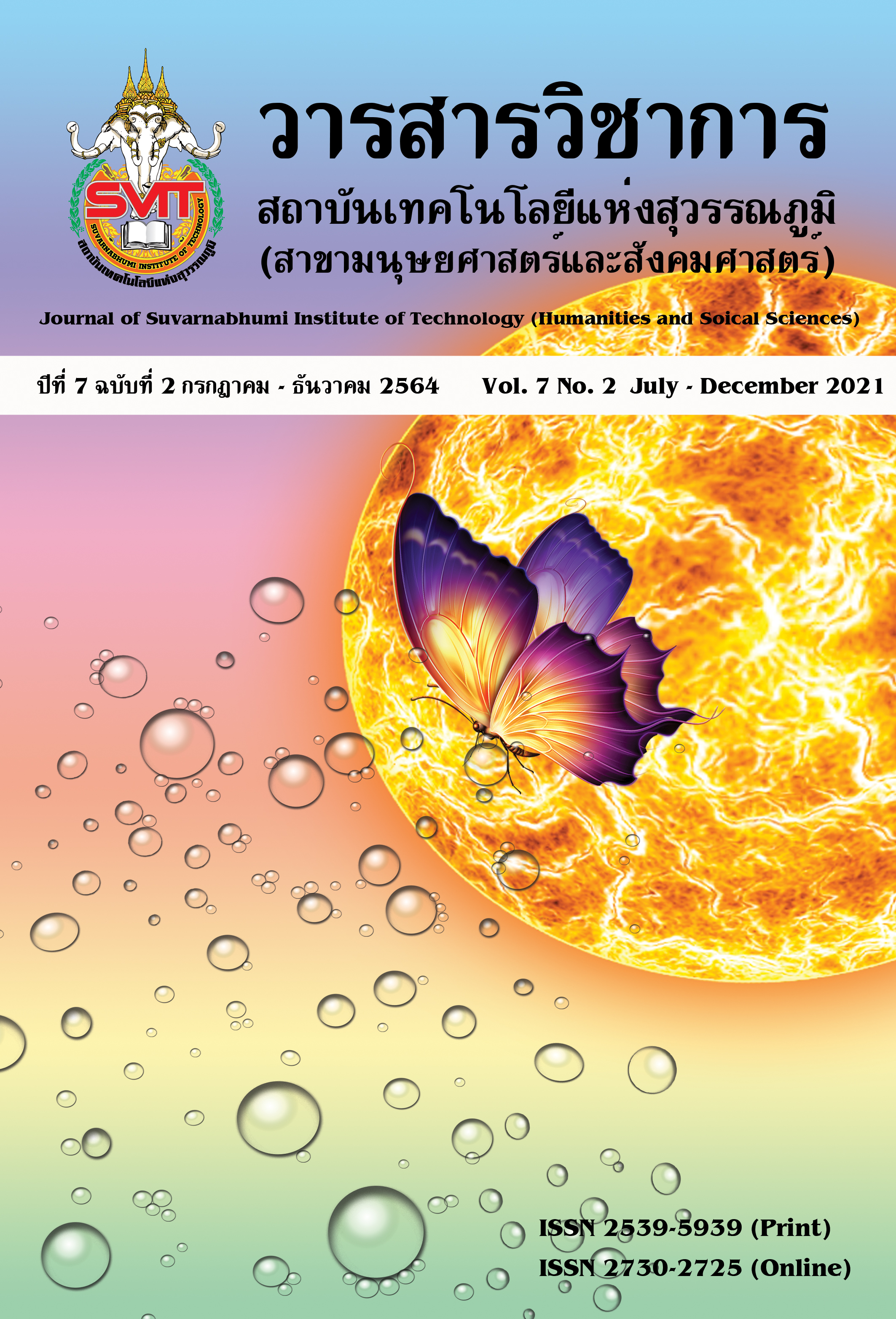THE 2013-14 THAI POLITICAL CRISIS AS REFLECTED IN THAI POLITICAL CARTOONS
Keywords:
cartoon, newspaper, political crisis, semiotics, ThailandAbstract
This study aimed to investigate 84 political cartoons published during the 2013-14 Thai political crisis from four newspapers: Bangkok Post, The Nation, Thai Rath, and Daily News, by using semiotics, theories of cartoons, theories of humor, and critical discourse analysis. According to the data, it was found that in multi-panel cartoons, the cartoonists create humor by using incongruity and flouting maxims of Cooperative Principle. Secondly, the differences between Thai and English language newspapers include 1) most of the cartoons in the Thai language newspapers are in multi panels while most of the cartoons in the English language newspapers are in one panel, 2) most of the cartoons in the Thai language newspapers contain humor but all of the cartoons in the English language newspapers contain no humor, 3) most of the signifiers in the cartoons are related to the anti-government side, and 4) most of the cartoons in the Thai language newspapers emphasized negative things of the anti-government side but nearly all of the cartoons in the English language newspapers emphasize negative things of the pro-government side. Finally, the cartoons show strong political partisanship of the cartoonists that may create hatred and social fragmentation among people in the country.
References
Abraham, L. (2009). Effectiveness of cartoons as a uniquely visual medium for orienting social issues. Journalism & Communication Monographs, 11(2), 117-165.
Barthes, R. (1972). Myth Today (A. Lavers, Trans.) Mythologies (pp. 109-159). New York: Hill and Wang.
Chandler, D. (2013). Semiotics for Beginners. Aberystwyth University. Retrieved December 9, 2015, form https://d1wqtxts1xzle7.cloudfront.net/
Crystal, D. (1987). The Cambridge Encyclopedia of the English Language (revised edition 1995.). Cambndge University Press: Cambridge.
DeSousa, M. A. & Medhurst, M.J. (1982). Political cartoons and American culture: significant symbols of campaign 1980. Studies in Visual Communication, 8, 84-97
El Refaie, E.(2009).Multiliteracies: how readers interpret political cartoons.Visual CommunI- cation, 8(2), 181-205.
Fairclough, N. (1995). Media discourse. London: Edward Arnold.
Fredrickson, T. L. (2009). You Can Read the Bangkok Post. Bangkok: Post Books.
Grice, H.P. (1975). Logic and conversation. Syntax and semantics (vol. 3.). In P. Cole & J. Morgan (Eds.), Speech Acts (pp. 41-58). New York: Academic Press.
Griffin, E. (2012). A first look at communication theory. Boston: McGraw-Hill.
Hempelmann, C. F., & Samson, A. C. (2008). Cartoons: drawn jokes. The primer of humor research, 609-640.
Holloway, D. T. (2010). The relationship between print and electronic newspapers in Thailand in 2000 in terms of production processes and news contents (Doctoral dissertation). University of Leicester: A leading UK University.
Jabbar, D. L. R. A. (2009). A Semiotic Model for the Analysis of Political Cartoon. Retrieved May 22, 2015, from http://aladabj.net/wp-content/uploads/2014/01/24-A-SEMIOTIC-MODEL-FOR-THE-ANALYSIS.pdf
Mazid, B. E. M. (2008). Cowboy and misanthrope: a critical (discourse) analysis of Bush and bin Laden cartoons. Discourse & Communication, 2(4), 433-457.
Oller, J. W., & Giardetti, J. R. (1999). Images that work: Creating successful messages in marketing and high stakes communication. Westport, Connecticut: Quorum Book.
Prasirtsuk, K. (2015). Thailand in 2014. Asian Survey, 55(1), 200-206.
Ross, A. (2005). The language of humour. London: Routledge.
Tan, S. C. (2014). Political stalemate in Thailand: continued uncertainty and tension. Nanyang Avenue: Singapore.
Van Dijk, T. A. (2006). Politics, ideology and discourse: Elsevier Encyclopedia of Language and Linguistics. Volume on Politics and Language (Ruth Wodak, Ed.), pp. 728-740.
Van Dijk, T. A. (Ed.). (2011). Discourse studies: A multidisciplinary introduction. London: Sage Publications Inc.
Downloads
Published
Issue
Section
License
บทความที่ได้รับการตีพิมพ์เป็นลิขสิทธิ์ของวารสารวิชาการ สถาบันเทคโนโลยีแห่งสุวรรณภูมิ
ข้อความที่ปรากฏในบทความแต่ละเรื่องในวารสารวิชาการเล่มนี้เป็นความคิดเห็นส่วนตัวของผู้เขียนแต่ละท่านไม่เกี่ยวข้องกับสถาบันเทคโนโลยีแห่งสุวรรณภูมิ และคณาจารย์ท่านอื่นๆในสถาบันฯ แต่อย่างใด ความรับผิดชอบองค์ประกอบทั้งหมดของบทความแต่ละเรื่องเป็นของผู้เขียนแต่ละท่าน หากมีความผิดพลาดใดๆ ผู้เขียนแต่ละท่านจะรับผิดชอบบทความของตนเองแต่ผู้เดียว





